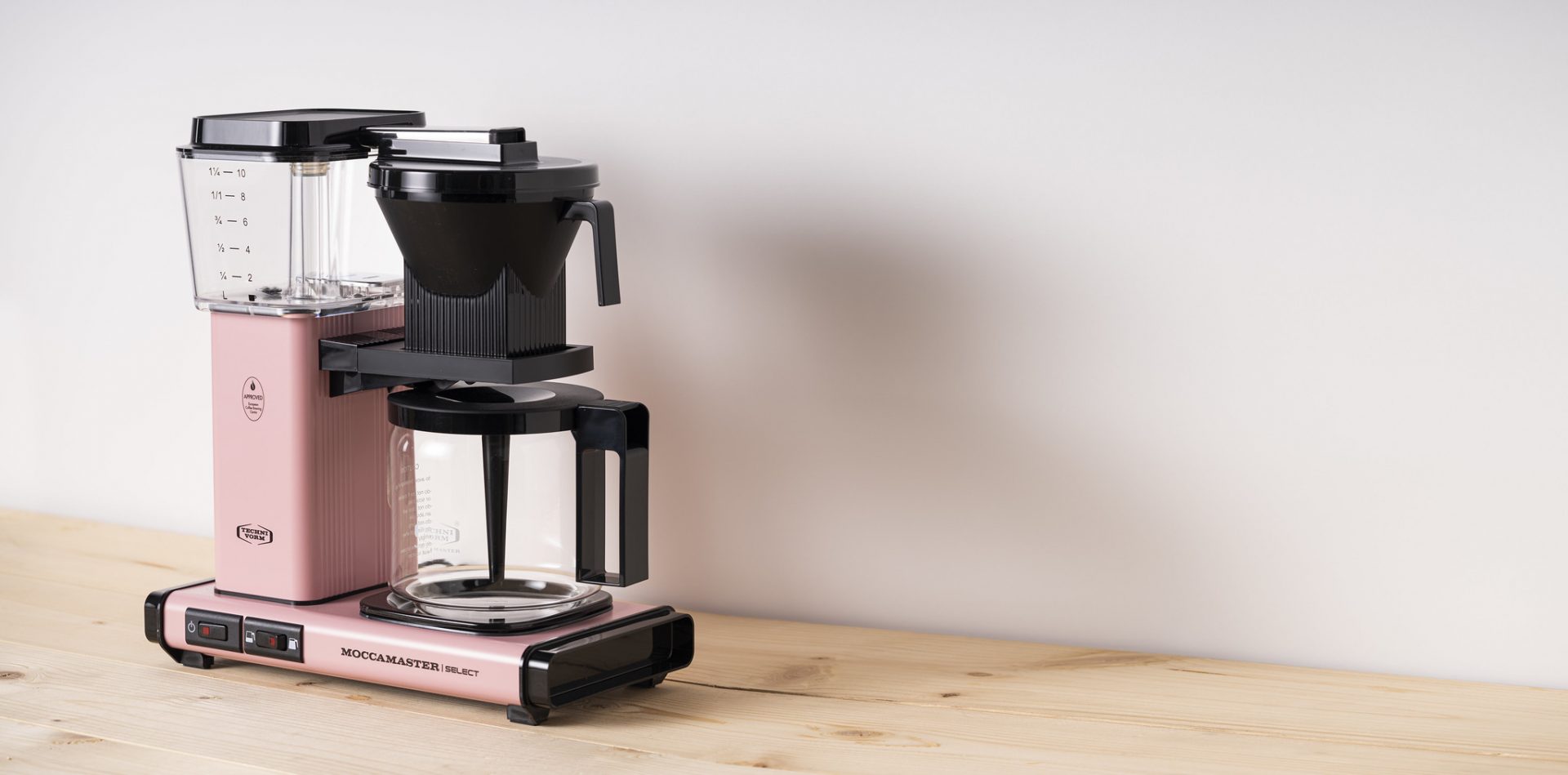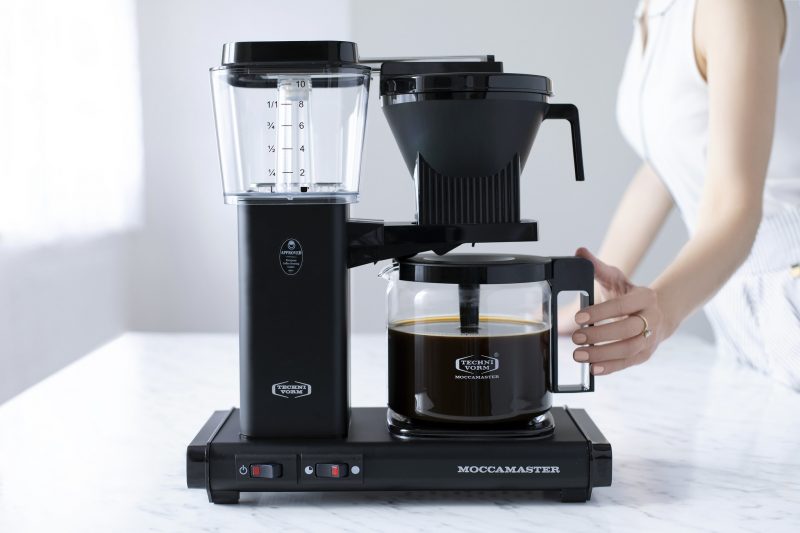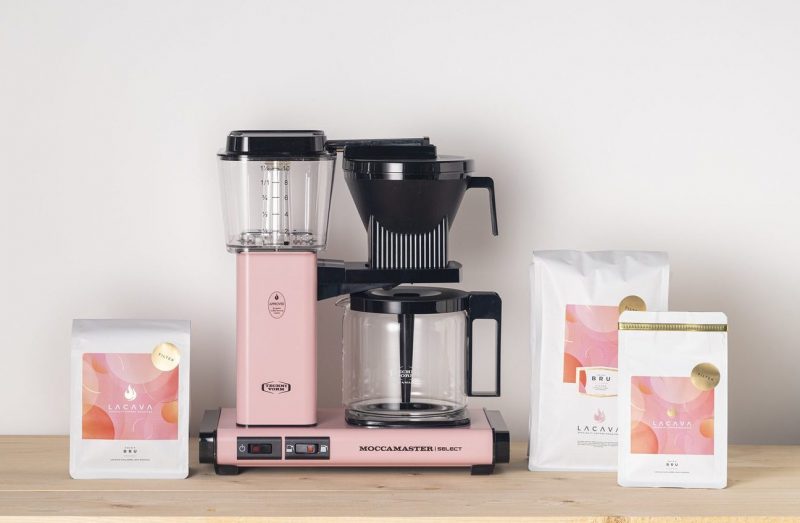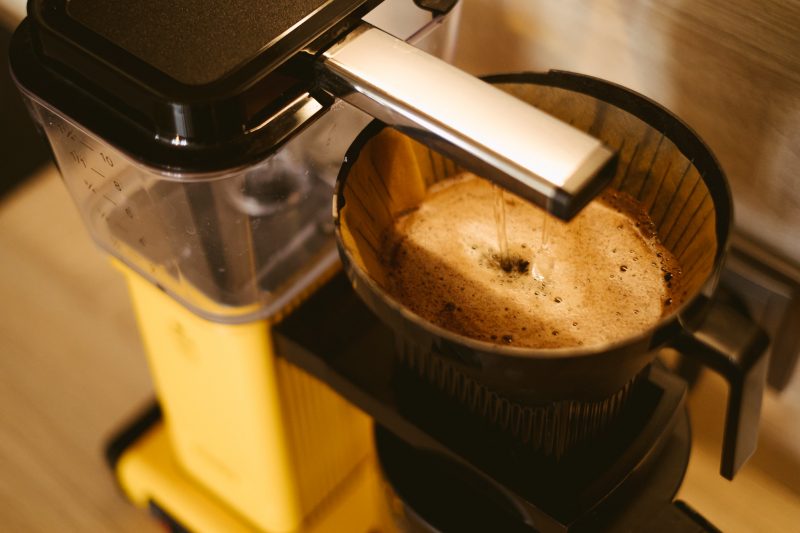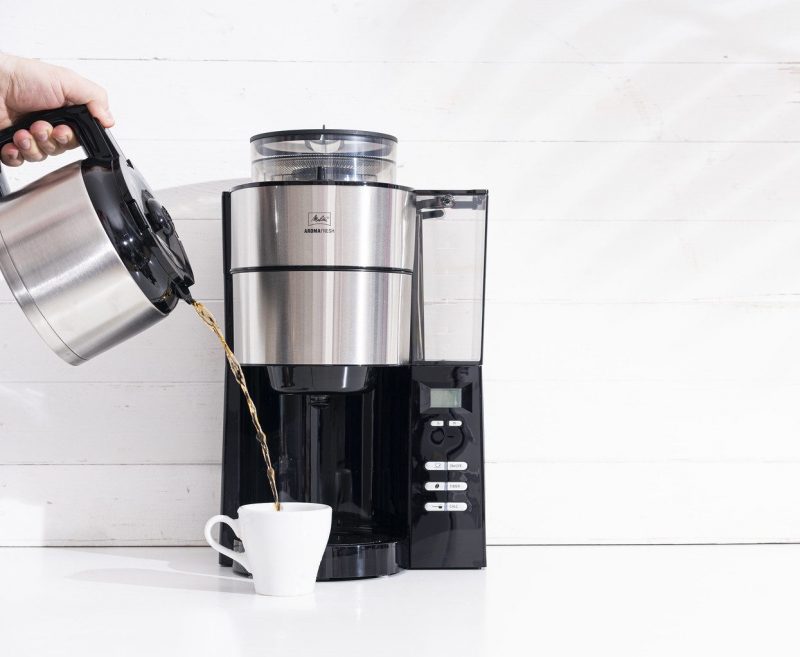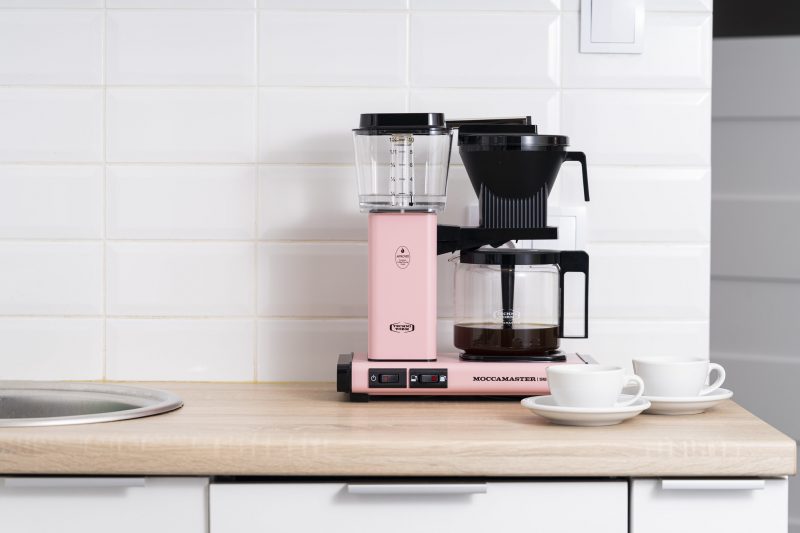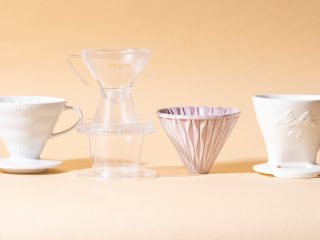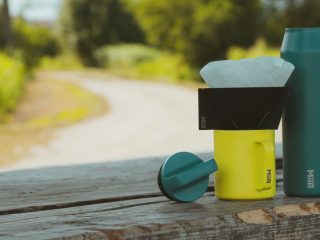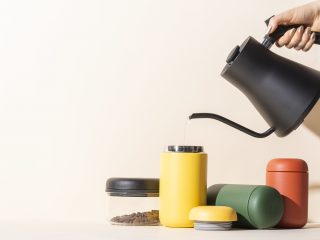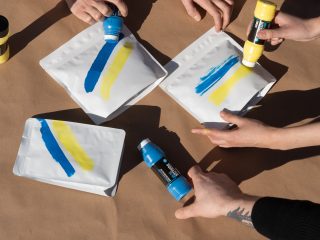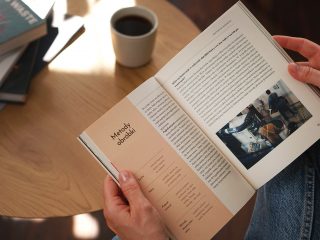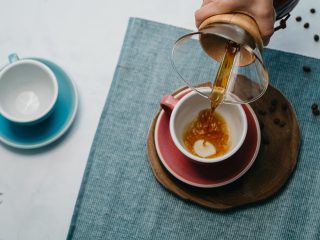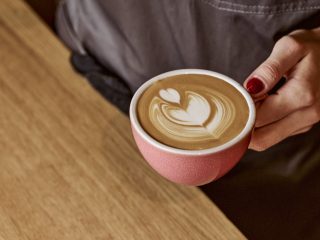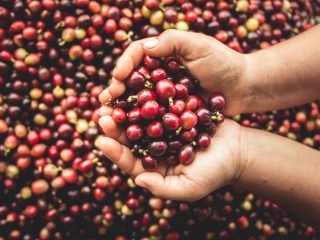Small, medium and large. Pretty, ugly, and beautiful. Filter coffee machines have many names, shapes and functions. However, the basics of their operation are identical. How does a filter coffee machine work and what is the coffee brewing process like? What to look for? Let’s set sail together into the wide waters of undisturbed coffee…
Design
Drip coffee machines are used all over the world, but most often in northern Europe, where people prefer to drink pour-over coffee, like during the Scandinavian coffee break called “fika”. The second major market for pour-over coffee is the United States.
The size of the device depends on its capacity / amount of brewed coffee – you can buy mini one-cup versions, as well as large machines brewing 2.5l of filtered black drink at a time. The most popular brand among automatic drip coffee makers is undeniably Moccamaster, which offers a variety of models. However, it is not the monopolist, there are also machines by Melitta, Wilfa, Sage or Ratio. Undoubtedly, the advantage of Moccamaster coffee machines is the high availability of various spare parts – a broken jug or a damaged shower won’t be a big problem.
Each coffee machine consists of a water tank, an overflow water heating system, a shower spraying water over coffee, a dripper, a warming plate, a coffee pot and a coffee scoop, often included in the set. The coffee pot is usually made of glass, although you can find models with steel jugs, which additionally maintain the temperature of the coffee after brewing.
The reservoir for filtered water usually comes with a scale, so that you don’t have to measure the amount of water beforehand, but just pour it to the indicated amount depending on how much coffee you want to brew.
Materials and quality
You cannot get water out of a stone, and neither will you get good coffee from bad beans. When brewing coffee in a drip coffee machine, two components are crucial: coffee and water.
The final taste and quality of the brew depend on the quality of the beans. With this brewing method you can use both light roasted beans for alternative brewing methods, as well as dark roasted beans for espresso. The latter will work especially for people who like their coffee with milk.
Water, its hardness and mineral content, will also affect the final taste of the brewed coffee. It is worth choosing filtered, soft water, not only for the sake of taste, but also bearing in mind the device itself – using hard water may cause lime deposits inside the device.
Brewing – how does an automatic drip coffee maker work?
The brewing process is very similar to manual overflow methods. The machine does a large part of the work for you. After pouring good-quality water into the water reservoir, place the filter and grind your favorite coffee. The amount of coffee and the degree of grinding should be adjusted to the amount of water in the container – the more coffee you want to grind and brew, the coarser the grind should be to maintain a similar brewing time. The grinding degree suitable for filter coffee machines is very close to that for a large Chemex, i.e. – from medium-fine sand when brewing 0.5l of coffee to medium-coarse salt when brewing more than 1l of coffee. It is important not to grind the coffee too finely, as this can result in too slow overflow of water and even flooding the kitchen counter. The drip coffee machines use the entire amount of water from the tank in the brewing process, if the water overflows too slowly, it can flow over the top of the coffee dripper.
The ratio of water to coffee is the same as for other gravity methods, i.e. 6 g of coffee for every 100 ml of water. Coffee’s “on the grinder”, so in the meantime it’s good to find a moment to rinse the paper filter with water – warm tap water is enough. Then pour out the water, pour in the coffee and turn on the device. The machine, in accordance with the SCA (Specialty Coffee Association) guidelines, brews coffee with water at a temperature of 92-96°C.
It is good to stir the coffee at the beginning of brewing (with a spoon or a stirrer), when the machine pours the first few portions of water onto the surface of the ground coffee. That’s it! Now you just need to wait approx. 4–6 minutes until the coffee is ready. You can spare that time on preparing “something sweet” to go with your pour-over coffee.
After brewing the coffee, it’s a good idea to stir the jug so that the entire portion of coffee tastes the same as the coffee is brewed in layers, from the most intense infusion at the beginning to the less intense at the end of brewing.
Cleaning – know-how
How to use a filter coffee machine to keep your coffee tasty? Take good care of it by keeping it clean. Cleaning directly translates into the taste of coffee – nobody would like to drink the highly limited Royal Beans coffee, in a jug dirty from the previous brewing. Carelessness = bad coffee. Given drip coffee machines, if you have a dishwasher, you can automate the cleaning process similar to the brewing process. In the vast majority of cases, the coffee pot, the filter container and plastic elements (covers) can be washed in the upper part of the dishwasher. Quick, convenient and almost maintenance-free. All you need is wipe the body of the device with a soft cloth.
What if you don’t have a dishwasher? It’s ok, it’ll do – you just need to wash the machine parts with a sponge and washing-up liquid. When washing the coffee pot, use the soft side of the sponge so as not to scratch the glass.
Who is it for?
For a singleton, a couple, a family, for your home, your office, a small business, an eating place – in fact, the drip coffee maker will work almost anywhere, with the exception of a very small kitchen – it may actually be difficult to find a place for the device… A little trivia-tip: avoid placing coffee makers in sunny places, because… it can grow algae! It is possible to get rid of these, but, you know, “prevention is better than cure”.
The filter coffee machine makes it easier to brew a large amount of coffee – the most popular models can prepare approx. 1l of coffee at a time, which comes in handy when you have guests. Preparing the brew is simple and resistant to home barista’s mistakes. Choosing an overflow coffee machine can also be a good solution for flatmates and it’ll prove to be perfect for sleepy mornings. Especially since the pour-over coffee makers are silent and more discreet than ‘pressure beasts’ equipped with vibratory pumps.
The economic aspect is also important – you can buy a good filter coffee machine at a much lower price than a home espresso machine. This may encourage the espresso lovers to set out into the world of filter coffee. This trip is worth discovering new layers of flavors.

